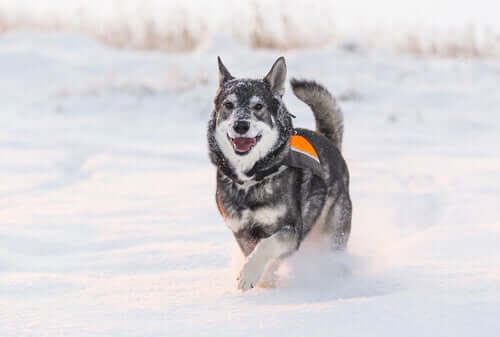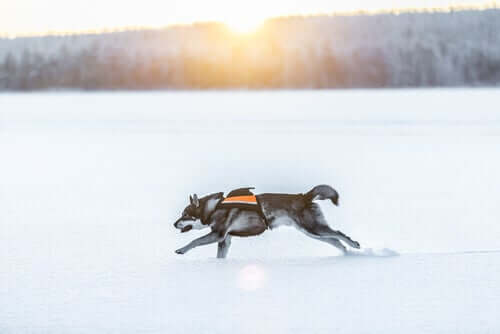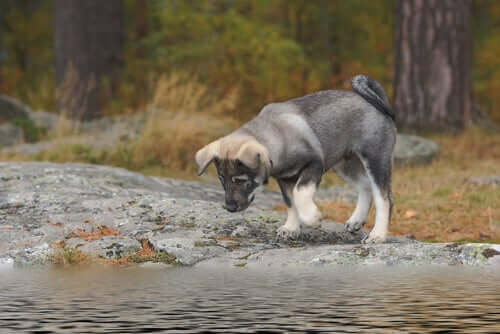Swedish Elkhounds

Swedish Elkhounds, or Jämhundt, are large ancient dogs. Closely related to wolves, both in appearance and character, they were originally raised for hunting. However, they also make excellent companions.
Origin of Swedish Elkhounds
According to the World Canine Association, Swedish Elkhounds belong to group 5, subsection 2. In other words, they are Nordic dogs that were originally raised for big game hunting.
In 1946, it officially became its own breed. However, we know that it’s an old breed. In fact, they’re related to the Norwegian moose hunter, and they look like wolves. They get their name from the Jämtland region in central Sweden. There, locals claim that they’ve always had these dogs.
Physical appearance
Although the breed was recognized in 1946, the current standard was approved in 2013. According to this, the breed is large, with a defined cut, strong and solid, but agile and imposing in appearance.

The body shouldn’t be too long or too heavy, but well-proportioned. In addition, they should look tall. The height in males is between 22.4 and 24 inches. However, females are between 20.4 and 23.6 inches tall. Therefore, there’s a slight difference in sexes.
For their fur, they have a double coat: the outer layer is close-fitting and doesn’t stretch. The inner layer is short with soft, light cream hairs.
The hair is short on the head and the front of the limbs. However, the back, neck, chest and tail hair is longer. It’s usually light or dark gray, with some light gray or cream spots on the side of the muzzle, chest or limbs.
Swedish Elkhounds’ character
Despite being affectionate and calm with family, Swedish Elkhounds can be a bit dominant with other dogs. In addition, they have a strong hunting instinct. They’re calm dogs and hard to change, making them stable companions in the field and at home.

Also, they are easy to train while young and love to please their owner. In fact, early socialization is best to prevent them from being territorial and dominant in adulthood.
Care and health
It’s important to brush them regularly to maintain the thick layers and prevent knots. However, bathing them too much can dry out their weather-resistant coat.
In addition, thanks to their thick fur, they are strong and resistant dogs, especially in low temperatures. Therefore, they’re perfect for colder or high mountain climate.
Like most large dogs, they need a balanced diet and regular physical exercise. Also, they need to go to the vet regularly to prevent problems like hip dysplasia, which is common in large dogs. You also want to avoid more serious problems like stomach torsion.